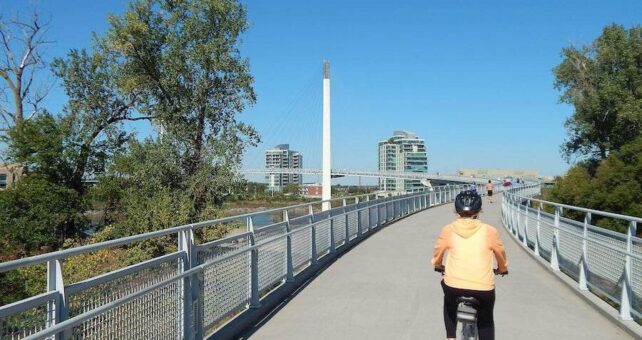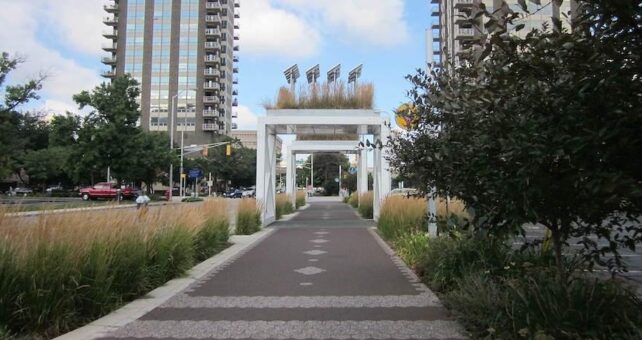Author Type: Non-RTC
resource
Mid-South Regional Resilience Master Plan
April 12, 2025
Resilience is vitally important to every single person living in the Mid-South. Climate and weather-related shocks and stressors have major impacts on safety and quality of life for all residents, regardless of age, income, race, community, etc. Mitigating these threats and building the capacity to bounce back quickly from disasters will keep residents safe and […]
resource
Trails as Resilient Infrastructure
April 12, 2025
This guidebook demonstrates how trails are part of resilient transportation infrastructure, how trails can be planned and designed to be resilient and sustainable, and how trails have a role in emergency planning and response. Trails of all kinds are places for recreation, exercise, and active transportation. Trails are also a crucial tool for making communities […]
resource
Central Indiana Trail-Oriented Development Study
March 17, 2025
Trail-oriented Development (TrOD) is a planning approach that clusters residential and commercial spaces around trails, creating walkable, human-scaled environments designed for active transportation, recreation, and business growth. Central Indiana features a growing network of trails, including the Monon Trail and Fall Creek Trail, with vibrant areas like Broad Ripple and Carmel Midtown successfully embracing TrOD […]

resource
Lamoille Valley Rail Trail Management Plan
February 25, 2025
The purpose of the LVRT Management Plan is to articulate a cohesive, community defined vision for the completed trail system and identify strategies to support the management, maintenance, operations, community connections and economic development opportunities along the trail. Author: Vermont Agency of Transportation (VTRANS)
resource
Guide for Maintaining Active Transportation Infrastructure for Enhanced Safety
February 25, 2025
The Guide for Maintaining Active Transportation Infrastructure for Enhanced Safety addresses maintenance of active transportation facilities for achieving mobility, accessibility, safety, and equity goals. The Guide presents a case for maintaining active transportation facilities as an integral component of a Complete Streets approach and discusses common maintenance issues impacting pedestrians, bicyclists, and micromobility users; temporary, […]
resource
Someday, We’ll Bike on a Path Across America. But First, Nebraska.
November 20, 2024
“Someday, We’ll Bike on a Path Across America. But First, Nebraska.” (The New York Times, November 2024)

resource
Valuation of Railroad Right of Way
November 12, 2024
This document from the Federal Transit Administration (FTA) provides support to grantees when real estate programs require the acquisition of real property interest owned by a railroad. It explains and outlines the necessity of developing a clear and understandable appraisal scope of work and describes the methodologies that may be most appropriate in arriving at […]
resource
STEP: Improving Visibility at Trail Crossings
June 13, 2024
The focus of this resource is on improving the driver’s visibility of trail users at roadway crossings. The document presents a systemic approach to reviewing existing crossings or planning for improved at-grade trail crossings with engineering countermeasures, such as enhanced signs and traffic controls. This resource discusses ways to make crossings more visible to drivers. […]
resource
Next Level Trails: Real Estate Guidelines & Procedures Handbook
April 29, 2024
The Real Estate Guidelines & Procedures Handbook will discuss real estate guidelines and procedures for the Next Level Trails (NLT) program. The procedures explained in this handbook should be read with extreme care. If the procedures are ignored, the applicant could encounter problems in receiving payment for eligible costs or claiming match value for land, […]

resource
Arkansas Trail of Tears Historic Bike Route
April 16, 2024
Established Trail of Tears Historic Bike Route.
-
First
Previous
1
2
3
4
…
8
9
Next
Last